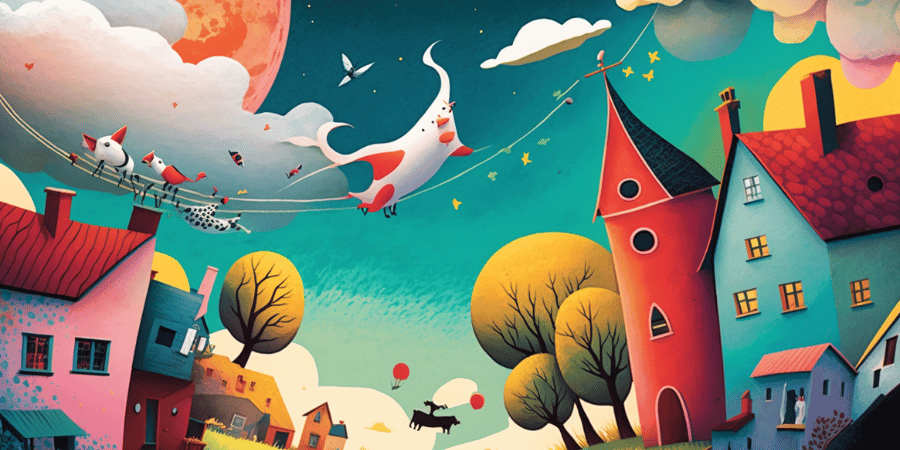
Have you ever dreamt of becoming a children’s book author? In this article, we’ll guide you through the exciting journey of turning your passion for storytelling into a successful career. From finding inspiration to submitting your work to publishers, we’ve got you covered. Let’s dive in!
Before you can become a children’s book author, you need to come up with a captivating story idea. This is where your creativity comes into play. Think about what type of stories you loved as a child and consider what topics might resonate with today’s young readers. Reflect on your own experiences and find inspiration in the world around you.
One key factor in crafting a successful children’s book is understanding your target audience. Consider the age range and interests of the children you want to reach. This will help you determine the appropriate language, themes, and illustrations for your story. Keep in mind that it’s essential to strike a balance between being engaging and age-appropriate.
As you begin to develop your writing style, remember that it’s crucial to write in a way that appeals to children. Keep your language simple and clear, using age-appropriate vocabulary. Focus on creating engaging dialogue and descriptions that bring your characters and settings to life. Don’t be afraid to be playful and imaginative – children love stories that spark their curiosity and inspire their imaginations.
Strong, relatable characters are the heart of any great children’s book. Take the time to develop your characters’ personalities, backgrounds, and motivations. Consider how they will grow and change throughout the story. It’s important that young readers can connect with your characters, so make them authentic and engaging.
Illustrations play a vital role in children’s books, as they help bring your story to life and engage young readers. Whether you’re an illustrator yourself or working with an artist, it’s important to choose a style that complements your story and appeals to your target audience.
If you’re not an illustrator, you’ll need to find one to collaborate with. Look for an illustrator whose style matches your vision and complements your writing. Establish clear communication and ensure you’re both on the same page regarding the project’s direction and timeline.
Once your story is written and illustrated, it’s time for the revision and editing process. This stage is crucial for refining your work and making it the best it can be. Start by revising your story on your own, focusing on structure, pacing, and character development. Then, consider enlisting the help of beta readers or critique partners to provide valuable feedback.
After revising your manuscript, it’s essential to work with a professional editor. They’ll help you polish your writing, fix any lingering issues, and ensure your manuscript is ready for submission to publishers. An editor can also provide guidance on formatting and other technical aspects of your manuscript.
Once your manuscript is polished and ready to go, it’s time to submit it to publishers. Research children’s book publishers that align with your story’s themes and target audience. Make sure to follow their submission guidelines carefully, as each publisher may have different requirements. This will increase your chances of getting your work noticed and ultimately published.
A compelling query letter and book proposal are essential when submitting your work to publishers. Your query letter should be concise and engaging, introducing your story, its main characters, and the themes it explores. The book proposal should provide a more detailed overview of your manuscript, including a synopsis, target audience, and marketing plans. Remember to highlight what sets your story apart from others in the market.
If traditional publishing isn’t the right fit for you, self-publishing is another viable option. This route allows you to maintain creative control over your work and potentially earn higher royalties. However, it also means taking on the responsibilities of marketing, distribution, and book production. Research various self-publishing platforms, such as Amazon Kindle Direct Publishing and IngramSpark, to find the best fit for your needs.
Whether you choose traditional or self-publishing, promoting your book is crucial for its success. Develop a marketing plan that includes social media, book signings, and school visits. Reach out to bookstores, libraries, and educators to build buzz and generate interest in your work. Creating a strong author platform can help establish your reputation and connect with readers.
The time it takes to become a children’s book author varies depending on your experience, writing process, and the time spent revising and submitting your manuscript. It can take anywhere from a few months to several years to see your work published.
While having a literary agent can be beneficial in navigating the publishing industry and negotiating contracts, it’s not a requirement for becoming a children’s book author. Many authors successfully submit their work directly to publishers or choose to self-publish.
The income of a children’s book author can vary widely, depending on factors such as advances, royalties, and the success of their books. According to the Society of Children’s Book Writers and Illustrators (SCBWI), advances for first-time authors typically range from $2,000 to $15,000, with royalties between 3% and 7%.
Registering your work with the U.S. Copyright Office provides legal protection against plagiarism. Keep in mind that your work is automatically protected under copyright law once it’s in a tangible form, but registering your copyright can provide additional benefits in case of infringement disputes.
In conclusion, becoming a successful children’s book author requires passion, creativity, and perseverance. By following the steps we’ve outlined in this article, you’ll be well on your way to turning your dream of writing for children into a rewarding career. Keep honing your craft, and never lose sight of the joy and magic that storytelling can bring to young readers.
